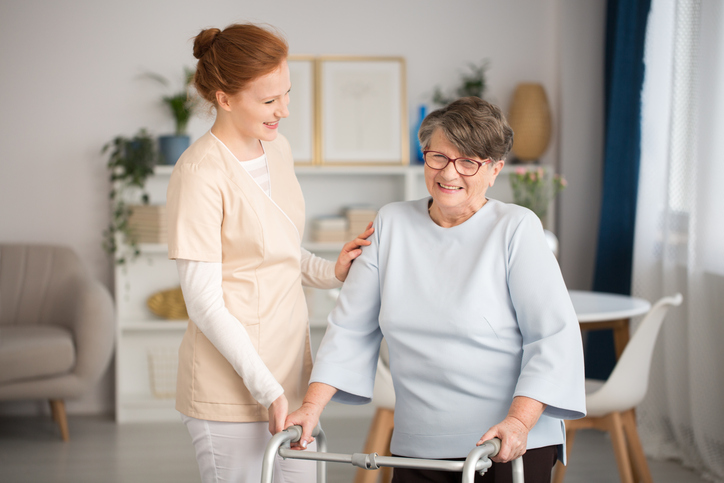Ensuring the safety and well-being of seniors in assisted living facilities is a top priority. With the rising number of elderly individuals residing in such environments, addressing fall prevention becomes crucial. This article explores various strategies and methods to effectively prevent falls in these facilities, ensuring a safer living space for our seniors.

Understanding the Importance of Fall Prevention
Falls are one of the leading causes of injury among the elderly. In assisted living facilities, preventing falls is vital to maintaining the health and independence of residents. By implementing comprehensive fall prevention strategies, facilities can significantly reduce the incidence of falls and related injuries.
Common Causes of Falls in Assisted Living Facilities
Several factors contribute to falls in assisted living environments. These include slippery floors, poor lighting, and inappropriate footwear. Additionally, health conditions such as muscle weakness, balance disorders, and vision impairments can increase the risk of falls among residents.
Environmental Hazards
Environmental hazards are a significant contributor to falls. Ensuring that floors are dry, clutter-free, and well-lit can mitigate these risks. Regular maintenance checks can help identify and rectify potential hazards promptly.
Health-Related Factors
Many residents in assisted living facilities have underlying health issues that increase their fall risk. Conditions such as arthritis, diabetes, and neurological disorders can affect balance and coordination. Regular health assessments and appropriate interventions can help manage these risks.
Effective Fall Prevention Strategies
Implementing a successful fall prevention program involves a multi-faceted approach. This includes regular risk assessments, staff training, and resident education.
Conducting Risk Assessments
Regular risk assessments are crucial in identifying residents who are at a higher risk of falling. These assessments should be conducted by trained healthcare professionals who can recommend personalized strategies to mitigate risks.
Staff Training and Awareness
Training staff to recognize fall risks and respond effectively is essential. Staff should be equipped with the knowledge and skills to implement fall prevention strategies and provide immediate assistance when a fall occurs.
Resident Education and Engagement
Educating residents about fall risks and prevention strategies empowers them to take an active role in their safety. Encouraging participation in balance and strength exercises can also improve their stability and reduce fall risk.
Technology and Tools for Fall Prevention
Technological advancements have introduced a range of tools to aid in fall prevention. From wearable devices to motion sensors, these technologies can enhance safety in assisted living facilities.
Wearable Fall Detection Devices
Wearable devices can alert staff or family members when a fall occurs, ensuring timely assistance. These devices are especially beneficial for residents who are at a high risk of falling.
Motion Sensors and Monitoring Systems
Installing motion sensors in rooms and common areas can help monitor residents’ movements. These systems can detect unusual activity patterns, alerting staff to potential falls or hazardous situations.
Designing Fall-Proof Living Spaces
Creating a safe living environment is key to reducing falls. This involves designing spaces that accommodate the needs of elderly residents and minimize hazards.
Non-Slip Flooring and Handrails
Installing non-slip flooring and handrails in hallways and bathrooms can provide additional support to residents, reducing the risk of slips and falls.
Adequate Lighting
Ensuring that all areas of the facility are well-lit helps residents navigate their surroundings safely. Motion-activated lights can be particularly useful in reducing nighttime falls.
The Role of Family and Caregivers
Family members and caregivers play a crucial role in fall prevention. Their involvement can provide additional support and assurance to residents.
Regular Communication
Open communication between family members, caregivers, and facility staff ensures that everyone is aware of the resident’s needs and any changes in their condition.
Providing Emotional Support
Emotional support from loved ones can boost the confidence and morale of residents, encouraging them to participate in fall prevention activities.
Conclusion
Fall prevention in assisted living facilities is a shared responsibility that requires cooperation between staff, residents, families, and caregivers. By understanding the risks and implementing effective strategies, we can create a safer environment for our seniors.
For more information on fall prevention, visit the Health in Aging website.

FAQ
What are the most common causes of falls in assisted living facilities?
Common causes include environmental hazards like slippery floors and poor lighting, as well as health-related factors such as muscle weakness and balance disorders.
How can technology help in fall prevention?
Technology such as wearable fall detection devices and motion sensors can provide timely alerts and monitor residents’ movements, enhancing safety.
What role do family members play in fall prevention?
Family members can offer emotional support, ensure open communication with staff, and encourage residents to participate in fall prevention activities.
This article contains affiliate links. We may earn a commission at no extra cost to you.

